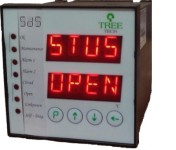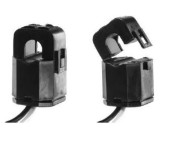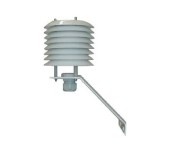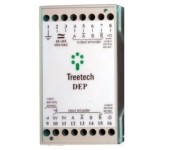SDS Disconnect Switch Specialist Monitor
A great number of motorized disconnect switches are used in substations for insolation and equipment switching.The reliability of the system and the safety of installations depend on the switches remaining in working condition. Closure and opening operations must be performed correctly especially when remotely controlled.
In order to make it possible to monitor disconnect switches of any size, in Power Distribution, Transmission and Generation systems, the SDS Disconnect Switch Specialist Monitor provides an optimized, simple and effective solution. The SDS can diagnose in real time the disconnectorstate and completion of operations, detection and alarmsfor unsuccessful operations or confirmation of successful operations.
The SDSissues alarms if any abnormalities occur based on measurements and engineering algorithms, as well as providing maintenance reminders, as configured by the user through a colour code system. This allows the user to rapidly check the status of the disconnect switch.
- Green – Transformer working correctly. No maintenance required;
- Blue – Transformer working correctly. Maintenance reminder;
- Yellow – Minor abnormality;
- Red – Major abnormality.
The above statuses can be linked to IDS output contacts, allowing for the remote signalling of the disconnecting switch status and the indication of a successful or abnormal operation.
The SDS is capable of advanced communications and is equipped with redundant Ethernet ports fibre optics or RJ45 or wireless Wi-fi network, as well as IEC61850, HTTP protocols for embedded web pages, FTP for remote access to files and databases and SMTP to send alarm emails. Communication Protocol selectable by the user; Modbus RTU and DNP 3.0 level 1; Meets DNP 3.0 level 3 whenever applicable.
Power is supplied to the disconnect switch by a motorized mechanism, which applies torque during itsoperation, and creates a typical “signature”. Under normal conditions, the same signature is repeated for each operation, to open or to close. Mechanical problems in the disconnect switch will alter this signature, allowing the SDS to detect problems at the inception.
Since the torque developed by the motor is proportional to the electric power, the SDS monitors torque indirectly through motor power, to detect failures and issue alarms. For this purpose the SDS supervises several variables online according to the version of the disconnetor version in use:
- Current oscillographs, voltage and power used by the motor during the operations
- Auxiliary contacts of the disconnect switch signalling open or closed states;
- Auxiliary contacts to signal the actuation of the disconnect switches, the motor and controls
- Control voltage, as measured by oscillographs during the operation
- Temperature inside the actuation mechanism
- Ambient temperature
- Current of the anti-condensation heater of the actuating mechanism
- Displacement of the main contact during the operation, measured by encoder
To diagnose the switch and its operations, the IDS uses specialized engineering algorithms to correlate these measurements, obtaining useful information for diagnostics and prognosis, such as:
- Motor consumption signature during operation
- Power consumed by the motor during operation
- Motor starting current at the beginning of the operation
- Disconnect switch operation time to slow or to fast
- Minimum and Maximum voltages during operation for the detection of power supply failure.
- Continuous under and overvoltage monitoring of the motor power supply.
- Coherence of the disconnect switch state signalling contacts
- Failure of anti-condensation system heating resistance
- Temperature of the actuation mechanism to low or to high
- Continuous under and overvoltage monitoring of the command power supply
- Total displacement of the main contact during operation
- Coherence of the disconnect switch signalling contacts relative to each other and in relation to the position measurement of the main contact
- Number of motor operations, total and after the last maintenance
- Motor service time, total and after the last maintenance
- Remaining time before service time maintenance
Other Features
- MassMemory
- Monitoring Anti-Condensationand Command Power Supply
- Disconnect Switch Maintenance
- Local use of USB Device
- Configurable by the user via USB, front or serial port.
Accessories
- External Split Core Clip-On CTs
- Auxiliary Potential Transformers
- PT100Ω temperature sensor at 0ºC
- Weather shield to measure ambient temperature
- Incremental Encoder
- Surge Protection device for Encoder, Digital Density and Temperature Sensor – DEP




